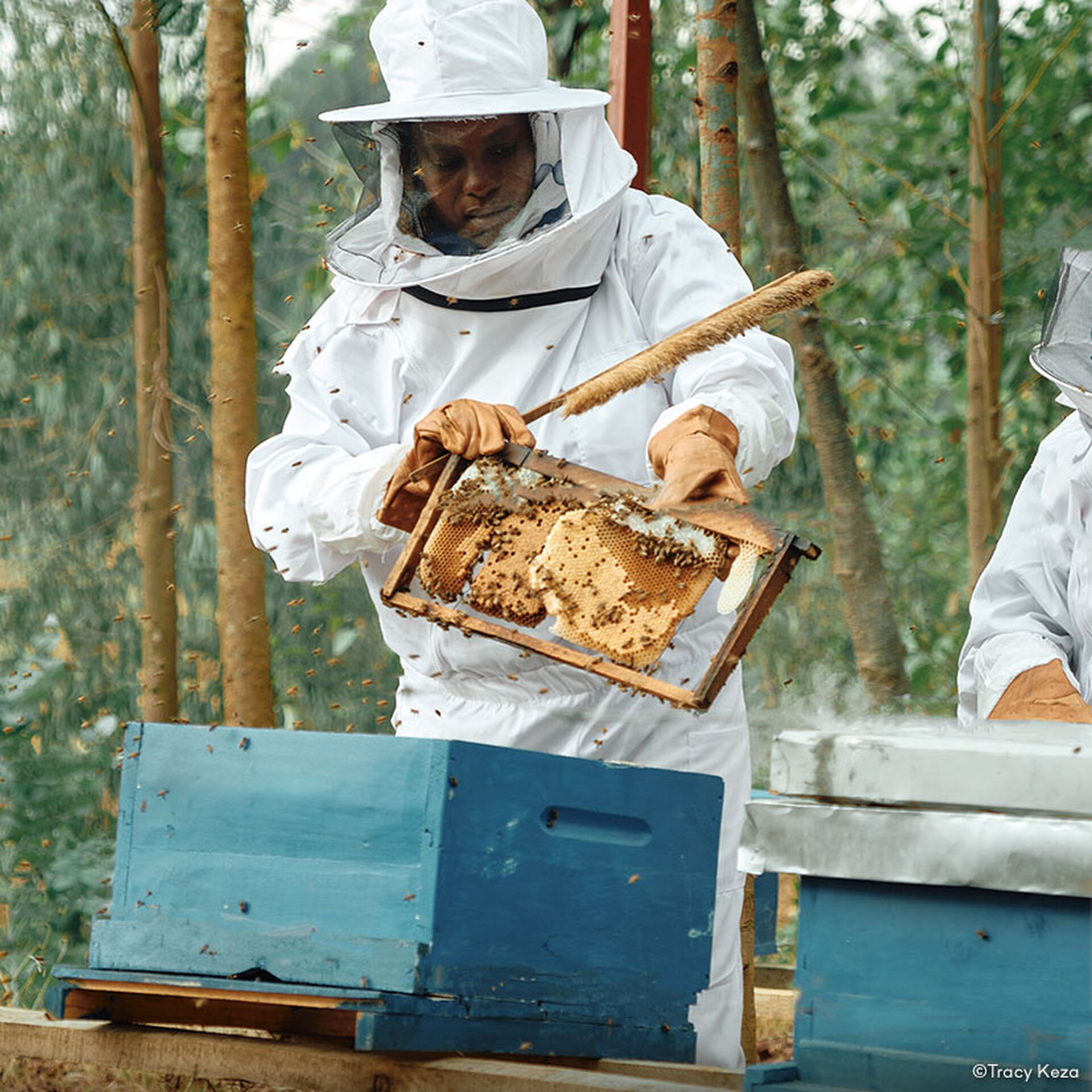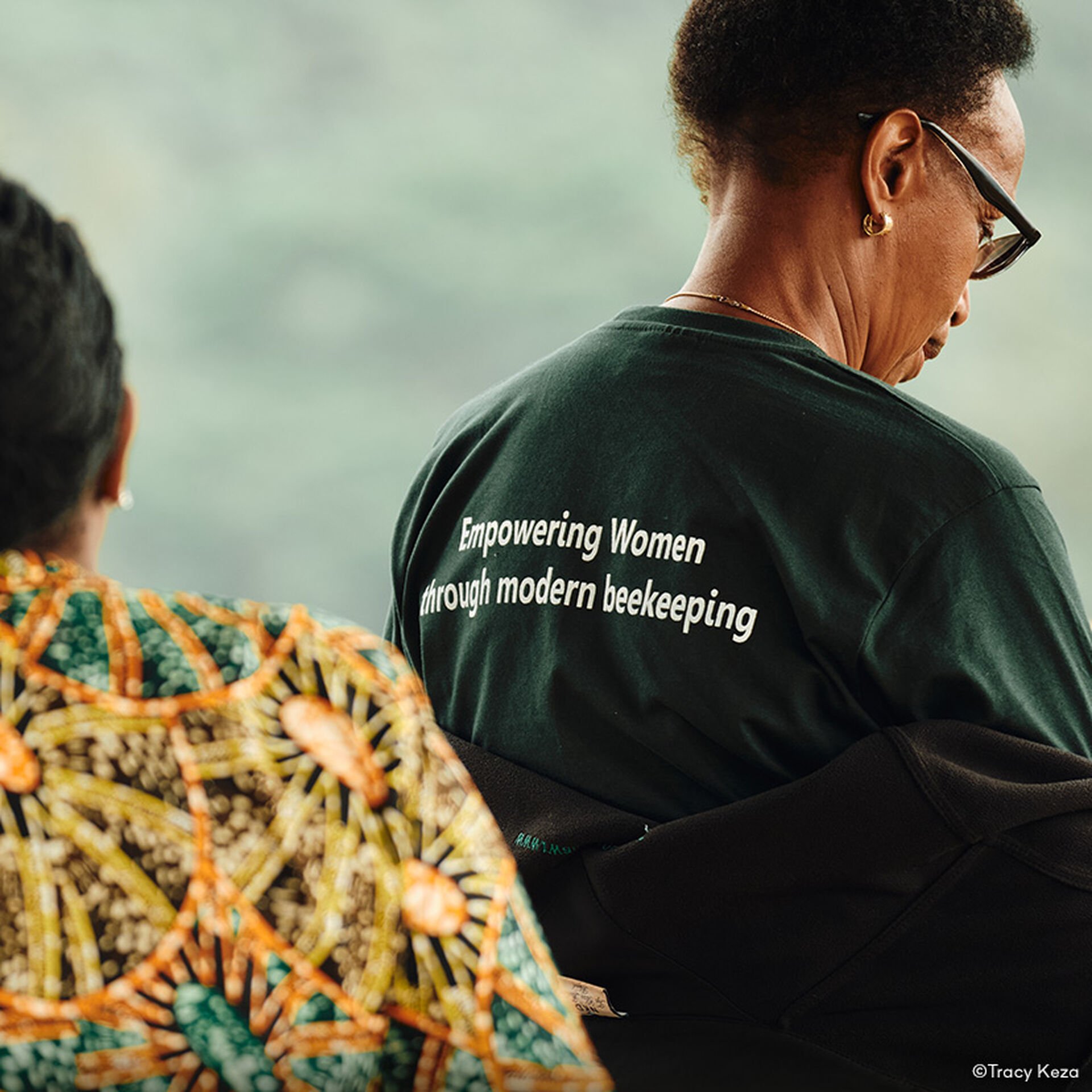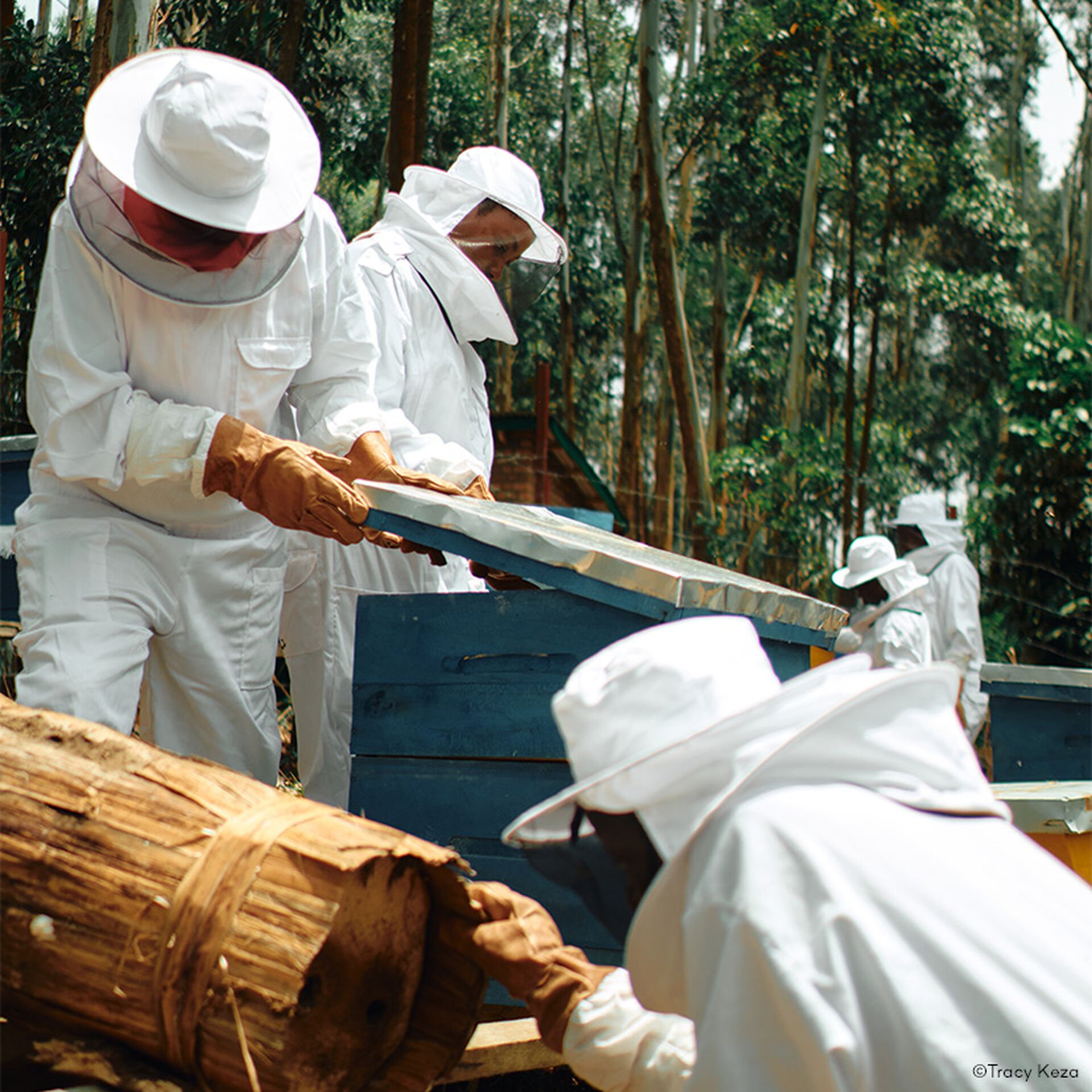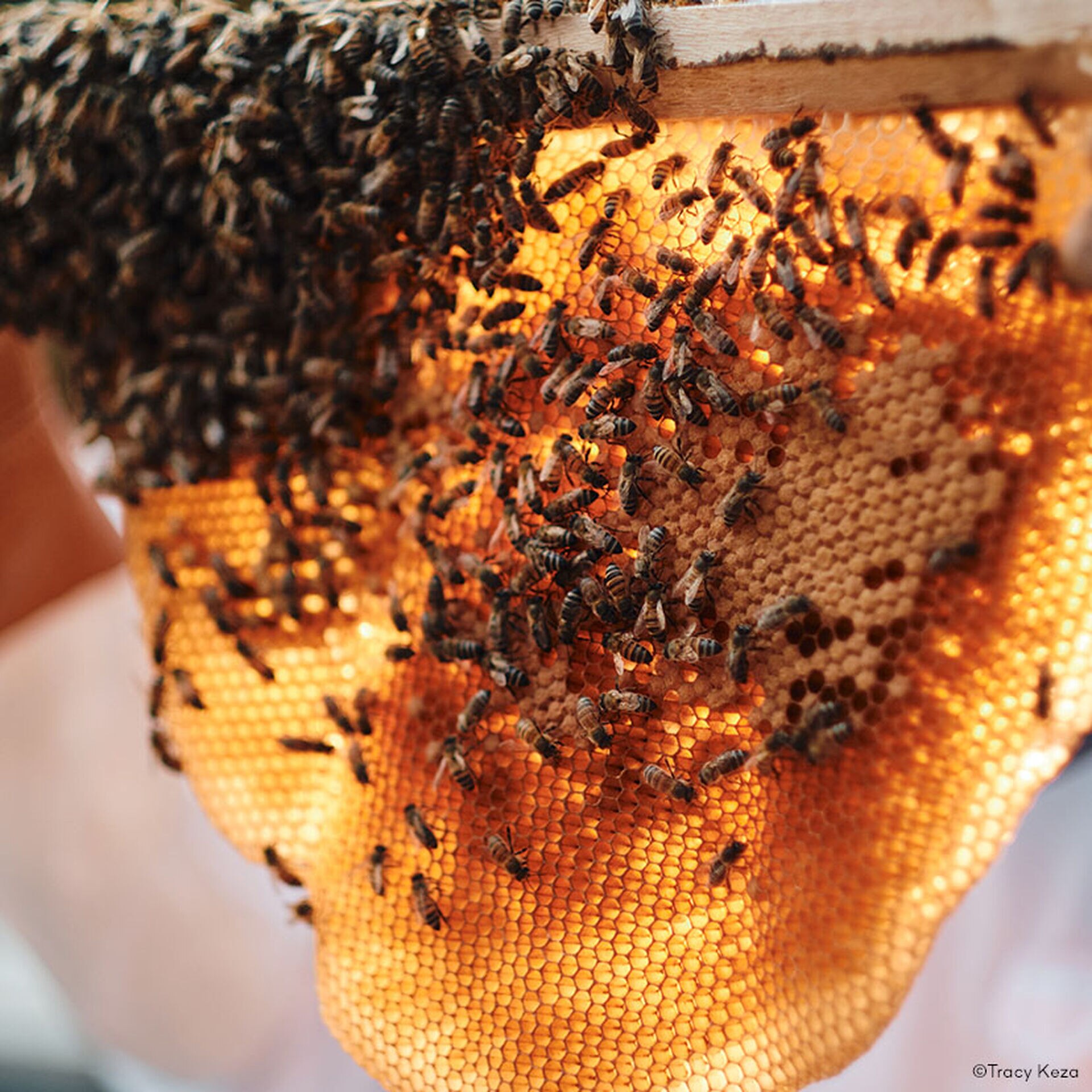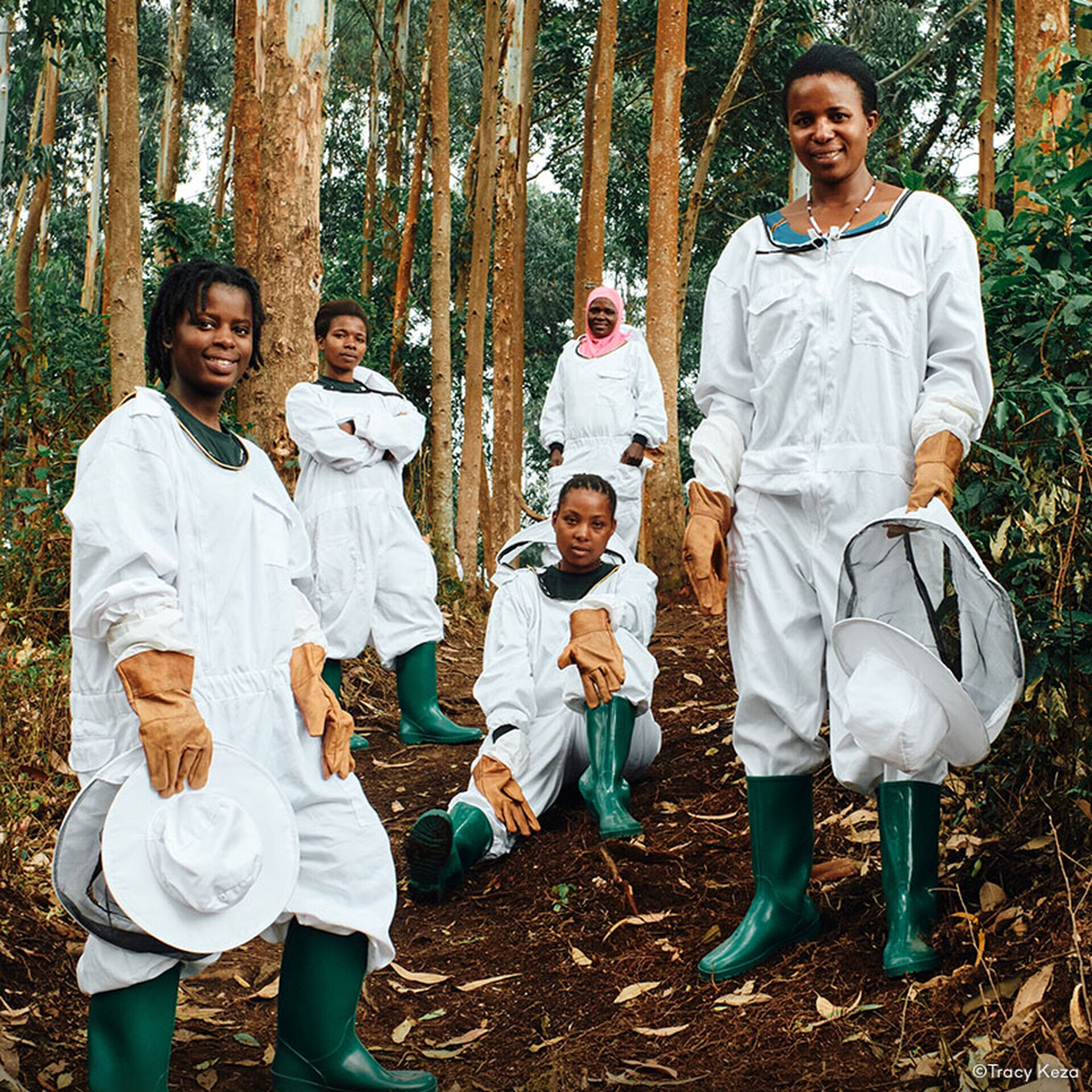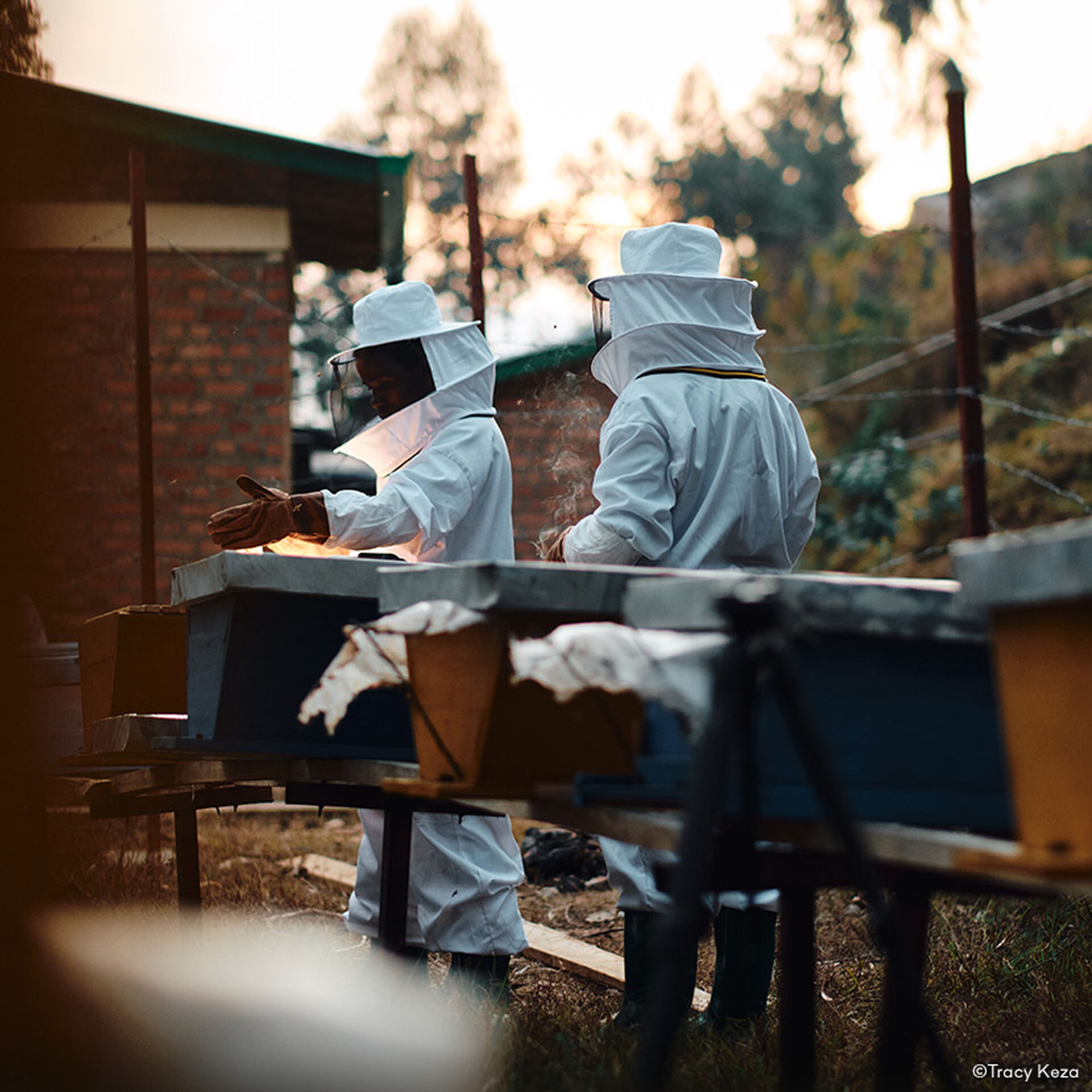“WOMEN FOR BEES”
HEADS TO RWANDA
WITH ENHANCED SUPPORT FOR
LOCAL WOMEN, BEEKEEPING TRAINING,
AND CONSERVATION OF BIODIVERSITY
Three years since launching the pioneering “Women for Bees” programme, UNESCO and Guerlain, have ambitiously expanded their apicultural entrepreneurship programme to the Gishwati-Mukura Landscape Biosphere Reserve in Rwanda —the programme’s first endeavor on the African continent— with a new cohort of beekeeping trainees.
THE OBJECTIVE OF THE PROGRAMME:
WOMEN EMPOWERMENT AND SCIENTIFIC BACKING
One key outcome of the programme for these women is a deeper understanding of bee biology and the acquisition of modern beekeeping knowledge and skills. The training serves also as a path toward their financial autonomy and emancipation, while fostering camaraderie, bringing the women together in collaborative work and a supportive exchange of ideas.
“Beekeeping inspires me to think big, and through it, I know I can achieve significant challenges.”
EMILIENNE MUKASINE,
BEEKEEPING TRAINEE
THROUGH THE LENS OF THE PHOTOGRAPHER TRACY KEZA
LEARN MORE
“WOMEN FOR BEES” PROGRAMME
Launched in 2020, the “Women for Bees” programme is a state-of-the-art female scientific and training programme founded by Guerlain and UNESCO. It promotes the twin objectives of women’s empowerment and biodiversity conservation.
"Women for Bees" has already been implemented in France and Cambodia with UNESCO and also with other referential NGOs in Japan, Spain, Italy and Mexico. The programme will continue to be rolled out worldwide in the coming years.
THE GISHWATI-MUKURA LANDSCAPE UNESCO BIOSPHERE RESERVE
The Gishwati-Mukura Landscape Biosphere Reserve, listed as a UNESCO heritage site, is in the North-Western part of Rwanda, where the two landscapes, Gishwati and Mukura, are connected by a 70 km-long corridor.
Currently, approximately 338,000 people live nearby, deriving their main income from agriculture and agroforestry. The local flora supports beekeeping, with numerous colonies of wild bees indicating a high potential for honey production.
